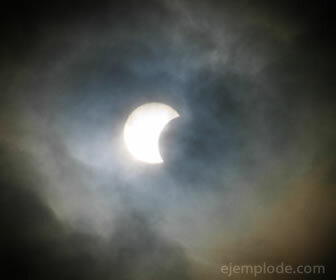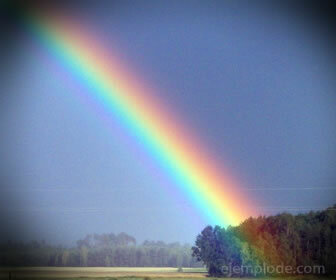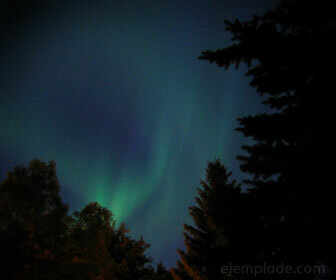Example of Natural Phenomena
Geography / / November 13, 2021
They are called natural phenomena to all movementsunusual or periodic changes and events, which are physical, biological and chemical that occur without the will or intervention of the human being. They are varied and are presented as:
- Wind and tornadoes
- Rains and storms
- Droughts
- Snowfall
- Northern lights, etc.
In the nature many happen phenomena, What are they result of natural forces or elements, which are remarkable and in which the human being does not intervene and cannot be controlled. Elements such as wind or water, under certain circumstances can cause natural phenomena that are quite noticeable and acquire their own characteristics. These are natural phenomena. Some of them can be predicted with greater or lesser accuracy, but their intensity or duration cannot always be specified.
The media have associated the idea of natural phenomena only with catastrophic or potentially catastrophic phenomena, such as earthquakes, hurricanes, and volcanic eruptions. However, all manifestations of nature
, both at the level of the elements, and in behavior of many animals they are natural phenomena.The natural phenomena can be beneficial or catastrophic, depending on the place, the way, plus some can be predicted in advance, and more at present where technology plays a very important role.
In culture, natural phenomena have taken on very important roles, as tragedies or as means of sustenance, such as as happens with the growth of some rivers such as the Nile, which provide nutrients for the land of the rivera.
Natural phenomena affect the behavior of some animals, which adapt or migrate as in the case of monsoons.
Types of natural phenomena:
Predictable natural phenomena:
- The rains
- Eclipses
- The droughts
- Rainbows
 Solar eclipse, predictable natural phenomenon.
Solar eclipse, predictable natural phenomenon.
Natural phenomena related to the movement of the planet:
- Tide
- Seasons
Biological natural phenomena:
They are reflected in the reactions of animals such as migration, either for reproductive purposes or as protection purposes against adverse climates.
- Hibernation
- Migration
- Transfer to places where there is seasonal food.
Unpredictable natural phenomena:
- Earthquakes
- Solar flare
- Tidal waves
- Hurricanes
- Tornadoes
14 examples of natural phenomena:
1. Rain. Rainfall occurs when the water completes its cycle, where the temperature raises the particles become vapor and condenses them, turning into rain when weight and density force their drop.
2. Hail. This occurs due to low temperatures, which occur at certain times of the year, due to the distance from the planet in relation to the sun, those that cause the condensation of the clouds to form ice spheres, which precipitate in the form of hail.
3. Electric storms. This phenomenon occurs when the wind produces friction between the clouds causing static frames, which are polarized in relation to the earth, forming electrical discharges in the form of lightning.
4. Rainbow. It is an arc of colors, product of the decomposition of light when passing through the raindrops, as if they were a prism, and as a whole, the decomposition of light causes it to be seen in the form of bow.

5. Tides They are caused by the gravitational attraction that the moon exerts on the sea and other bodies of water, causing its level to increase or decrease.
6. Trade winds. The trade winds are the winds that create a marine and wind current, which create a current in the Atlantic that circulates from Europe to America.
7. Auroras Auroras are the effects of the solar wind colliding with the magnetosphere, the magnetic layer that surrounds the earth, and which is most visible in the polar areas. In the Northern Hemisphere, it is known as the Northern Lights. In the southern hemisphere it is the southern aurora.

8. Red sun. In many cultures, seeing the reddish sun at sunset was a harbinger of misfortune. Now we know that this phenomenon is a consequence of sand particles from the Sahara desert, which are suspended in the atmosphere. This also causes it to appear reddish on some nights with a full moon.
9. Earthquakes. They are earth movements, caused by the rearrangement of the tectonic plates that are under the continental surface. The collision or rupture of these plates releases energy that goes out in the form of waves towards the surface.
10. Hurricanes The acceleration of the winds produced by the heating of seawater areas combined with low barometric pressures, which causes that the wind currents rotate around the warmer area, causing it to reach high speeds, which can cause a lot of destruction.
11. Eclipse. An eclipse is a natural phenomenon that consists of the superposition of one star on another, covering it. The appearance of night occurs mainly in the eclipse of the sun, which is completely covered by the moon. Another eclipse that occurs is the lunar eclipse, which occurs when the earth covers the sun, reflecting the shadow of the planet on the moon.
12. Frost. Frosts occur when the planet is at the farthest point from the sun, this produces an accelerated drop in temperature, which It produces an extreme cold that is below 0 °, this does not mean that it snows, because in many cases the humidity is low and it does not occur snow.
13. Snowfall. This phenomenon occurs mainly at the planet's poles, which change their temperature when the sun is away from the planet (inverted) where wet weather and cloud water freeze and snow instead of raining, producing a thick layer of snow on the surface land.
14. Eruptions This is an isolated phenomenon, which is due to the high temperature of the planet, which produces the existence of volcanoes, which throw incandescent material (lava, ash, gases).



